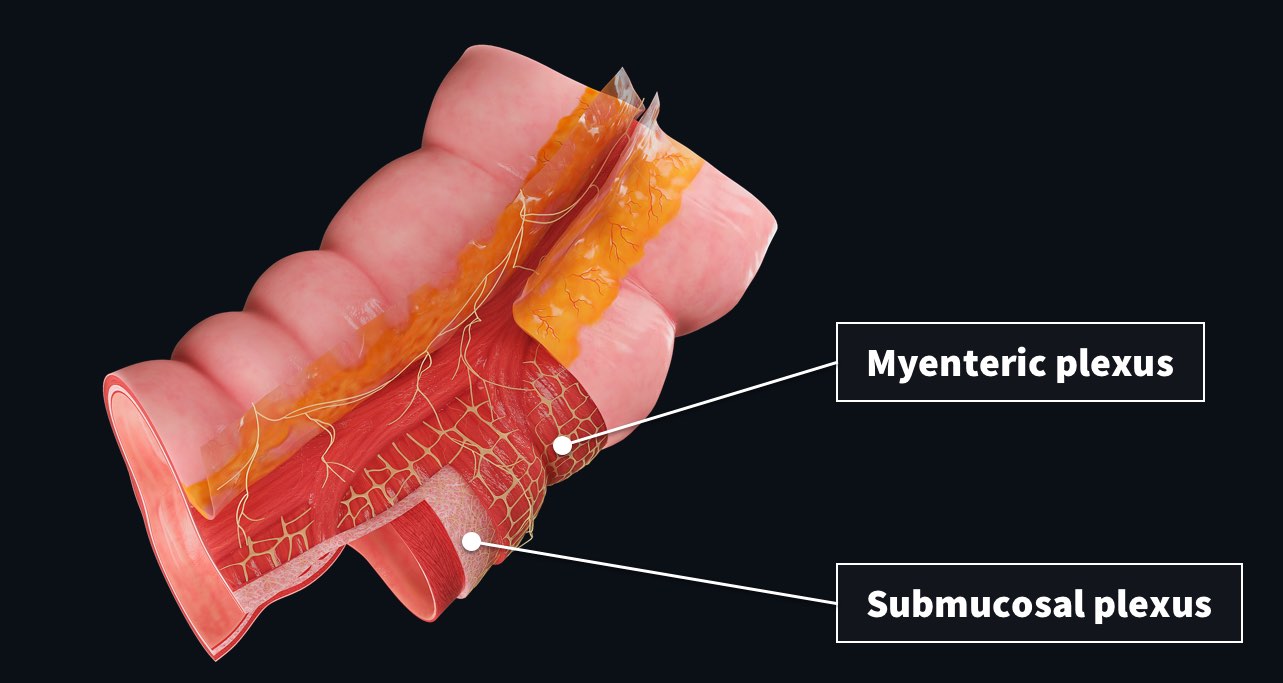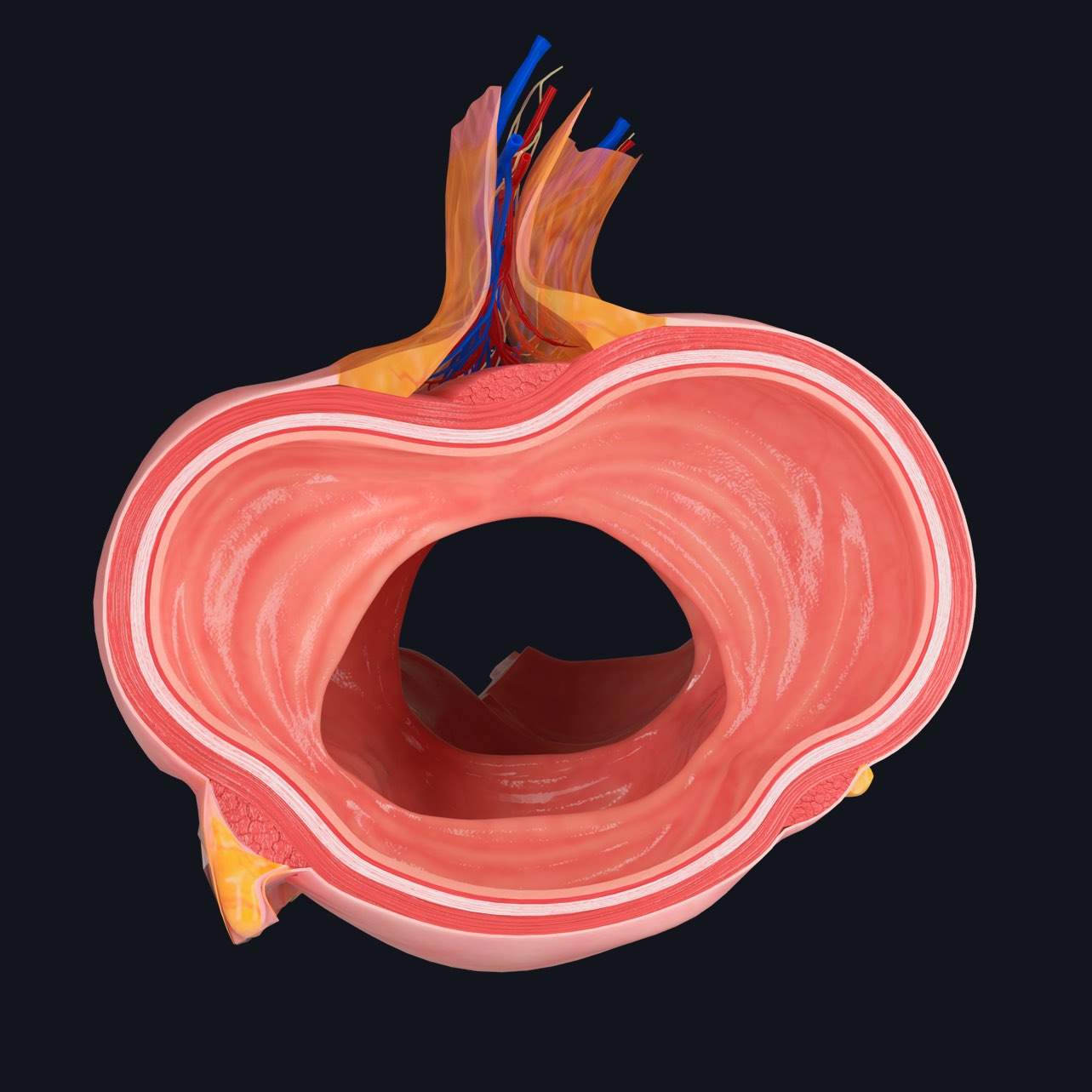
In one of our previous snippets, we explored the large intestine and how each component of the digestive system plays a role in breaking down the food we eat, transforming the end product into nutrients used by the body for many important functions. Now let’s dive deeper, and look at a SNEAK PEEK of our new Colon microanatomy model for reference.
The human body has adapted by developing autonomic systems independent of our control to ensure that a body system flows without interruption. One of these systems is the intrinsic nervous system of the gastrointestinal tract.
The enteric nervous system is the intrinsic nervous system of the gastrointestinal tract. This system is made up of complex circuits which acts alongside neurotransmitters to detect the physiological condition of the gastrointestinal tract, integrate information about the state of the gastrointestinal tract, and provide outputs to control gut movement, fluid exchange between the gut and its lumen, and local blood flow. All these processes are performed independent of our control.

Pictured above is a sneak peek of the transverse colon microanatomy model and it clearly highlights the two subdivisions of the enteric nervous system located within the large intestine and they include:
Myenteric plexus
This is also known as the Auerbach’s plexus, it is located between the longitudinal and circular muscle layers of the large intestine providing motor innervation to this layer as well as facilitating secretion, absorption, and blood flow within the large intestine.
Submucosal plexus
This is also known as Meissner’s plexus as its name implies, it is located within the substance of the submucosa and participates alongside the myenteric plexus to provide gastrointestinal motility as well as the functions listed above.
Isn’t it quite remarkable to think that every second of the day, these systems are participating together to operate important functions in your body, such as digesting the food we eat? ????
Understand the complexities of the anatomy in context with the world’s most advanced gross 3D anatomy atlas, in addition to an ever-expanding range of 14 microanatomy models. Try it for FREE today.
